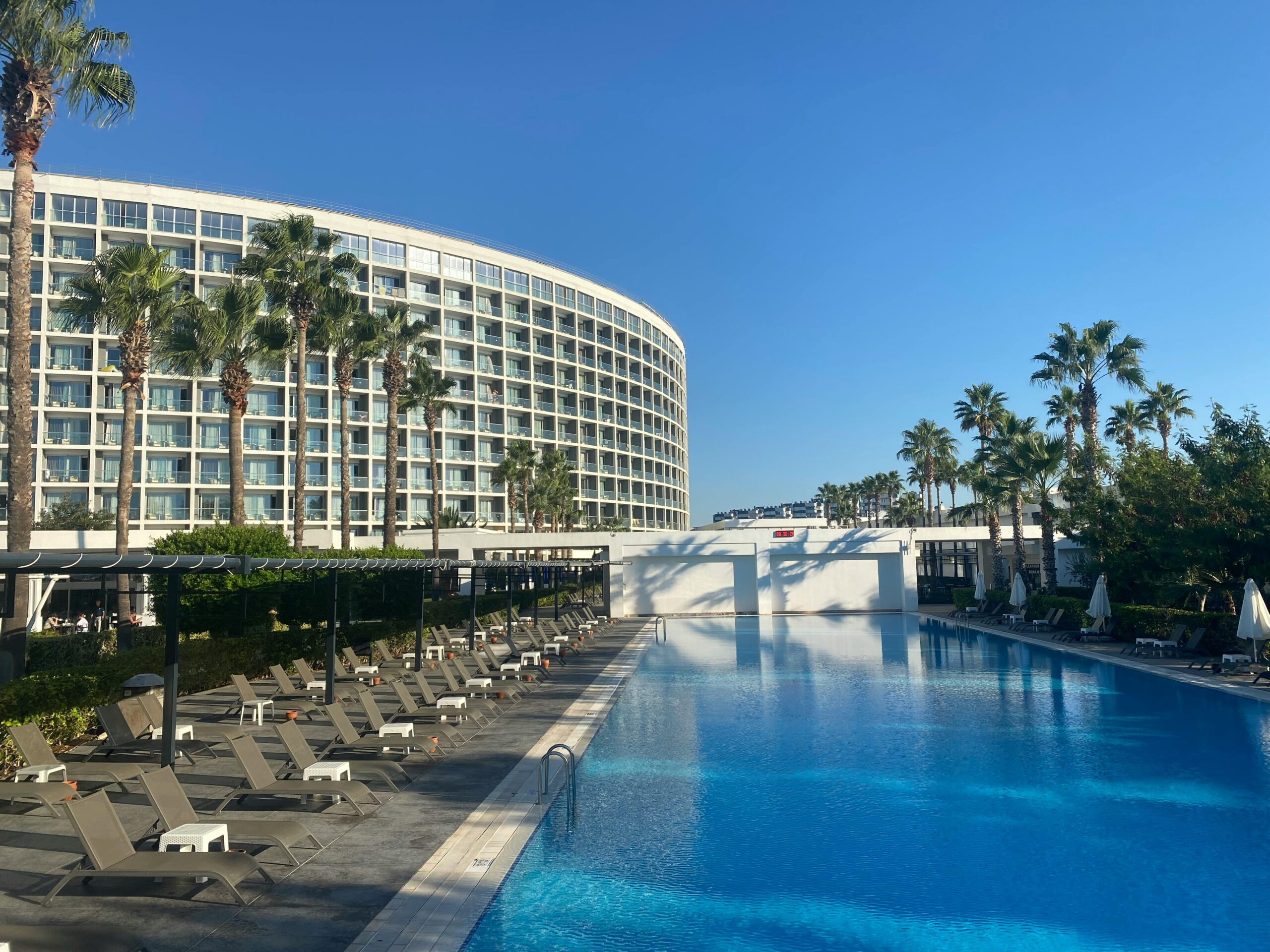Introduction to Outdoor Inground Swimming Pools
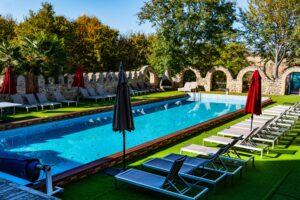
What Are Outdoor Inground Swimming Pools?
Outdoor inground swimming pools are permanent swimming pools that are constructed as part of the earth, and are meant to be incorporated into the surrounding environment of a backyard or an outdoor living space. Inground pools are permanent constructions, unlike portable or above-ground pools, which are normally constructed using concrete, fiberglass, and vinyl. Their design flexibility enables them to be designed by home owners to suit their shape, depth and features and can be a focal point of relaxation, exercise and entertainment.
Why Homeowners Choose Inground Pools
To most homeowners, a choice to install an inground pool is much more than the ability to swim. These pools are lifestyle benefits as they provide a personal get-away where one can relieve stress, or they serve as a family and friends meeting place. Inground pools will also increase the value of the property, particularly when accompanied by intelligent landscaping and designing. They are unlike above-ground options and provide a more refined and resort appearance to make a backyard complete.
Common Misconceptions About Inground Pools
Inground pools are not well understood even though they are popular. Most people think that they can only afford luxury homes but contemporary materials are now available at a variety of prices. People consider them to be very tough to maintain but development of automation, filtration and environmentally friendly systems have made treatment easy. The other myth is that it takes years to install and in the real sense, most of the inground pools are accomplished within a few months, depending on the complexity and permits.
Basics of Outdoor Inground Swimming Pools
Key Features and Components
Inground pool is not a water hole. It is made of several major parts:
- The Shell: It is composed of concrete, fiberglass or vinyl that forms the structure of the pool.
- Filtration System: Water is filtered to render it clean and safe by removing debris or even balancing out the chemicals.
- Pump and Plumbing: Moves water so that it is hygienic and clean.
- Decking and Surrounds: The area that is around the pool that enhances safety and design.
- Convenience Additions: Additions like heaters, light and automation.
All this is combined to make the pool magnificent and functional.
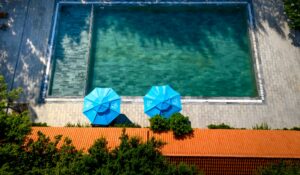
Different Types of Outdoor Inground Pools (Concrete, Fiberglass, Vinyl)
- Concrete Pools: Concrete pools are highly customizable in shape and size, durable and are the most costly, as well as time consuming to build.
- Fiberglass Pools: Shells which are mass produced and then inserted into a hole being dug and quicker to put up, low maintenance but limited in shape.
- Vinyl Pools: It is made using a vinyl liner and a less expensive frame that can be modified, although the liner must be replaced every 7-10
Pros and Cons Compared to Above-Ground Pools
Pros: The inground pools are stronger, more beautiful, customizable and may increase property value dramatically.
Cons: They are more expensive than above-ground pools, more difficult to install, and have to be serviced, unlike above-ground pools.
Design Ideas for Outdoor Inground Swimming Pools
Modern Pool Layouts and Aesthetics
The upcoming design trends in 2025 tend to be smooth and minimalistic in design. Rectangular pools with clean lines are still in vogue and the free form pools are more natural in appearance. Infinity edges, tanning ledges, and built-in spas are also other features that home-owners consider to be luxurious.
Landscaping and Outdoor Integration
The most attractive pool is one that looks comfortable with the surroundings. There can be strategic landscaping, which can be stone-laid patios, shaded pergolas, or tropical plants, to make a pool a backyard oasis. The use of smart lighting creates the sense of ambiance and increases the duration of use during the evening.
Pool Accessories and Add-Ons for Style & Functionality
Unlike in the past when water features like fountains and waterfalls were considered a luxury, the contemporary accessories are increasing the level of safety and entertainment with the addition of functional items such as automatic covers. The long-term value and comfort are also brought by LED lighting, heating systems, and low-energy consuming pumps.
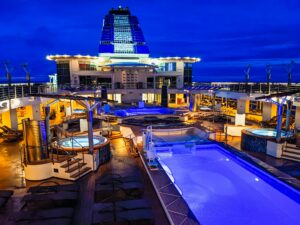
Cost of Outdoor Inground Swimming Pools
Average Installation Costs in 2025
The mean cost of an outdoor inground pool will be 35,000-70,000 in 2025 depending on the materials and size of the pool and the personalizations. Even the luxury options cost more than six figures.
Factors That Influence Pool Costs (Size, Materials, Location)
- Size & Depth: Bigger pools take more resources and manpower.
- Material Choice: Concrete is more expensive and has a longer lifespan, fiberglass has an average price and durability, and a vinyl one is cheaper in the short run.
- Location: Soil conditions, work accessibility, and labor rates in the region influence the total cost.
- Extra items: Heating, lighting, landscaping and custom shapes are extra items to add to the total cost.
Long-Term Maintenance and Operating Costs
There are costs that are incurred in maintaining a pool. Projected water treatment, electricity, cleaning, and seasonal care costs will be $1,500-3,000 annually. By investing in energy efficient systems these costs can be minimized.
Installation and Construction Process
Steps in Building an Outdoor Inground Pool
- Design and Permits: Finalising plans and approvals.
- Excavation: The excavation of the pool area.
- Framing/Shell Installation: Installation of concrete, fiberglass, and vinyl.
- Plumbing and Electric Work: Installation.
- Completion: Tiling, decking and landscaping.
- Filling and Testing: It is essential to ensure that the pool functions properly.
Timeline – How Long Does It Take?
Typically, fiberglass pools take 4-8 weeks, vinyl 6-10 weeks and concrete 3-6 months to be in readiness. Weather delays, permits and complexity of design could extend schedules.
Hiring Professionals vs. DIY Considerations
Most inground pools are professional with D.I.Y. pools available in the market. Errors in plumbing, excavation or electric work may be expensive and unsafe. Employment of licensed contractors will represent adherence to codes and quality of finish will be higher.
Maintenance and Care for Outdoor Inground Swimming Pools
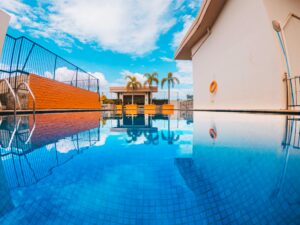
Routine Cleaning and Water Treatment
Regular cleaning of debris by skimming, vacuuming, cleaning walls and balancing chemicals are undertaken in order to ensure that water remains safe and clear. Robot vacuum cleaning and automatic cleaners can make it less difficult.
Seasonal Maintenance Tips
- Summer: Checking chlorine and pH.
- Fall: Clean up the leaves and get ready to keep warm.
- Winter: When the pool is properly covered and winterized it will not be damaged.
- Spring: opening of the pool, inspection and cleaning of the pools and the chemical balance.
Common Issues and How to Fix Them
- Cloudy Water: It usually occurs as a result of poor filtration or chemical imbalance.
- Leaks: These may be caused by plumbing or liner leaks.
- Algae Growth: This is usually associated with inadequate circulation or low levels of sanitizers. This is solved by routine brushing and shock therapy.
Real-World Applications and Case Studies
Outdoor Inground Pools for Residential Homes
Inground pools are usually constructed by homeowners in the form of backyard escapes. Small plunge pools or big ones, adapted to the sizes of families, they become the centers of recreation and amusement.
Commercial & Hospitality Pool Installations
Hotels, resorts, and clubs often use inground pools to improve the experiences of the guests. Such pools are usually designed in a special way, have enormous capacities, and elegant constructions to make them memorable.
Inspiring Backyard Transformations
Millions of house owners have transformed their boring backyards to resort type. As an illustration, a plain rectangular fiberglass pool combined with landscaping has the potential of totally altering outdoor living areas.

Conclusion
Outdoor inground swimming pool is able to bring in beauty, value and lifestyle in a home. Although it demands large initial cost and periodic maintenance, returns may be in the form of enjoyment the whole year round and long-term property value, which may be more than the expenditure. Do you desire the space to exercise, enjoy with your family, or relax, think of whatever you may want inground pool provides long-term benefits when properly planned and maintained.
FAQs
Q1: How long does an outdoor inground swimming pool last?
The concrete pools have a lifespan of more than 30 years, fiberglass of about 25 years, and the vinyl liner of 7-10 years before they require replacement.
Q2: Do outdoor inground pools increase property value?
Well, in-ground swimming pools are usually a source of increased house price, particularly in warmer areas, where pools are more popular.
Q3: Can I finance an outdoor inground swimming pool?
Financing avenues are available through many contractors and banks and the homeowners get to finance their costs.
Q4: What’s the best material for a pool in colder climates?
Fiberglass and concrete can resist freezing temperatures better than vinyl, which may require additional liner replacement.
Q5: How often should I clean my pool?
Simple cleaning, such as skimming should be performed a number of times a week, whereas full water balancing should be performed once or twice a week.
Related Articles

